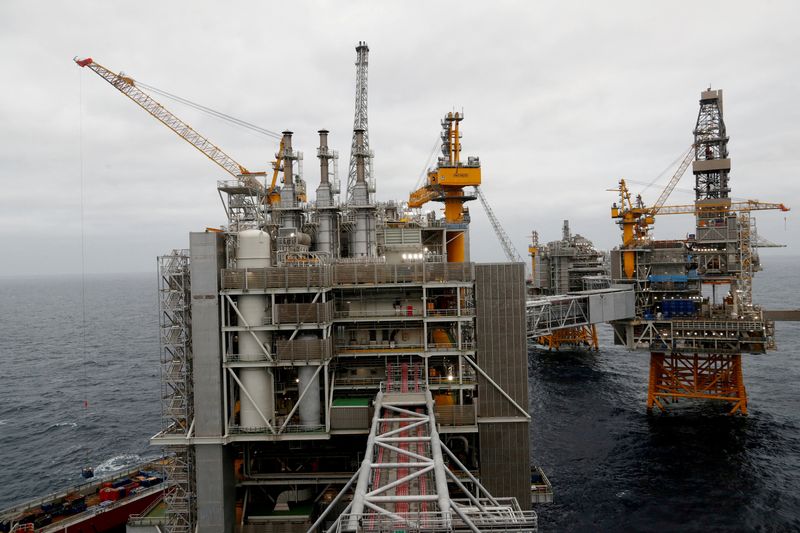By Nora Buli
OSLO (Reuters) - Norway must do more to prepare for a decline in its dominant oil and gas industry in the coming decades as other nations start to free themselves from petroleum dependence, the International Energy Agency (IEA) says in a new report.
Western Europe's largest oil and gas producer pumps more than four million barrels of oil equivalent per day but longer term its output is set to decline as the Norwegian continental shelf is considered a mature petroleum basin and as global demand shifts away from fossil fuels.
"Looking beyond 2025, the level of future investment in Norway's oil fields remains uncertain," the Paris-based IEA said in a report on Norway's energy policy, published on Wednesday.
The agency said resource-rich Norway is "uniquely well placed for the energy transition", but considerable work remains to meet its ambitious targets to reduce greenhouse gas emissions by 90-95% from 1990 levels by 2050.
Renewables account for 98% of Norway's power generation and at 50% of total final consumption, the country boasts the highest electrification share among IEA member countries, meaning many of the easy wins for reducing emissions are already achieved.
"The remaining reductions will be more complex, challenging and costly, notably in transport and industry," the IEA said.
The agency recommended Norway should jump-start clean technologies such as hydrogen, green shipping, carbon capture and storage and offshore wind, with the IEA urging the prompt adoption of a regulatory framework for the latter.

Last year, the IEA effectively called on global investors to stop funding new fossil fuel projects, a move which also raised public debate in Norway, where oil and gas is set to generate around 28% of gross domestic product this year and more than 40% of government income.
Although Norway is confident its oil and gas can compete in a declining market, it should still plan for a scenario in which demand falls faster than expected as a result of many countries setting targets of net zero emissions by 2050, the IEA said.